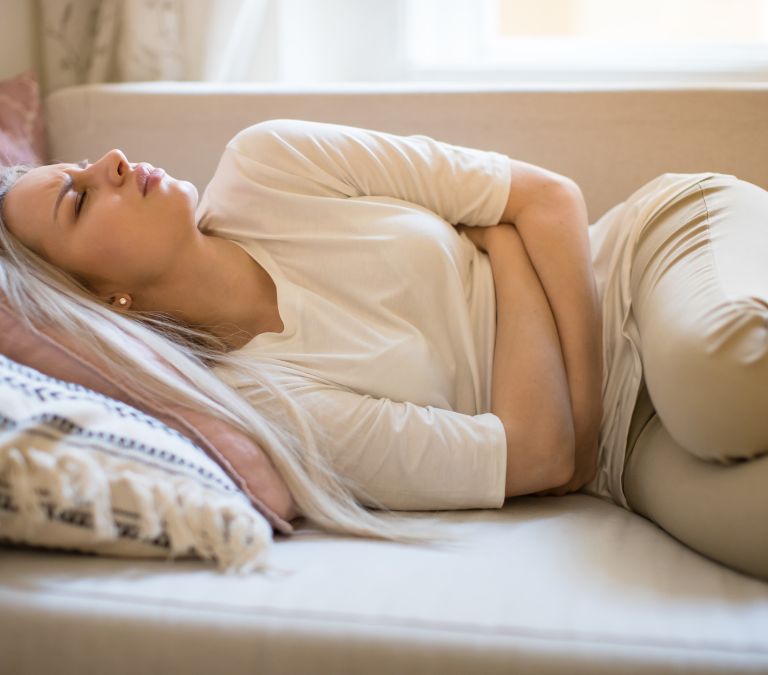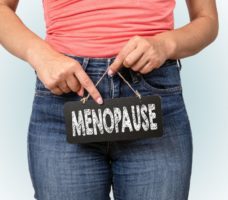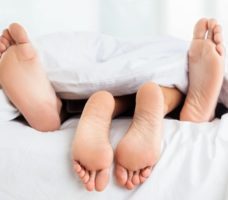Lower abdominal pain is not strange to us how about lower abdominal pain during menopause? That sounds strange to many women, especially newly menopausal women. As women, we have had periods for most of our lives, so we are used to the cramps.
Ovarian cramps are caused by eggs bursting open from the ovaries into the fallopian tubes during our periods. This pain is so well-known that it even has a German name. It’s known as mittelschmerz, which translates to “middle pain” because it occurs midway into our menstrual cycle (approximately 14 days).
As women, we are expected to go through menopause, that phase of our life when our reproductive cycle ends. We know that at a certain point in our lives, our ovaries will lose the capability to produce viable eggs. It happens because of changes that occur in our hormone levels.
The primary hormone involved here is estrogen. The decrease in this hormone leads to the domino effect of events that eventually culminate in our inability to conceive naturally. The period leading to menopause is known as perimenopause. During this period, we start experiencing the symptoms we associate with menopause: irregular periods, hot flashes, the night sweats. When we start seeing these symptoms, we know that menopause will soon come knocking.
We expect these and eventually start getting used to most of the symptoms. And some people even look forward to this phase. It marks the end of menstrual cycles; therefore, no more cramps, right? Well, this is not entirely true. While you might not get menstrual cramps after menopause, it turns out that lower abdominal cramps/pain is quite common in women undergoing menopause.
According to studies, perimenopause has been linked to increased general abdominal pain, particularly discomfort around the ovaries, during menstruation. Well, this isn’t surprising. I mean, it is probably still period pains. But then, what about pains during and after menopause? The primary marker of menopause is that you can no longer have periods. So what could be causing the pain you are feeling in your lower abdomen? Let’s find out, shall we?
What Could Cause Lower Abdominal Pain During Menopause?
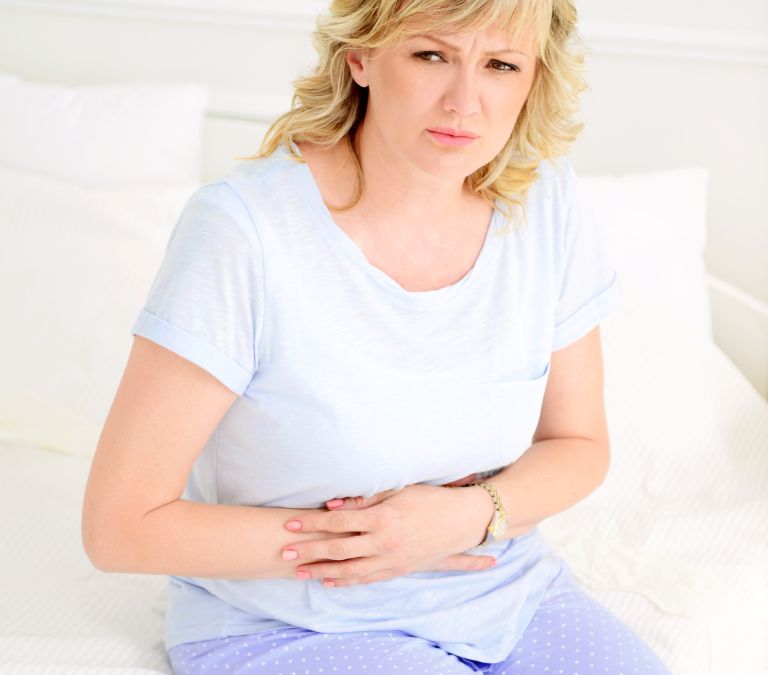
Now that we have established that menopausal women can still experience cramps, the next sensible thing would be to wonder why many women experience lower abdominal pain during menopause. We know the science behind the mittelschmerz, but that doesn’t explain why we still have lower abdominal pain during menopause. There are several reasons you might be experiencing this pain. We will look at some of them.
Ovarian Cysts
The ovarian cyst is another less common condition in menopausal women than in women who have not ceased menstruating. It is a cyst that grows in the ovaries. Yes, I know that definition leaves so much to the imagination, so let me break it down more. Every cis-woman has two sets of ovaries on either side of her lower abdomen.
These ovaries are responsible for fertilization by producing eggs. They also generate the two hormones estrogen and progesterone and thus play an essential part in the menstrual cycle, and the journey to menopause begins when they lose their functionality. A cyst is a sac that is filled with fluid. An ovarian cyst occurs when a cyst grows on one of the ovaries.
This condition is prevalent among women who are still menstruating, as research has shown that this condition tends to occur when you are menstruating. However, they can also happen to us even after menopause. Even though our ovaries are dormant, they do not disappear after menopause, and as long as you have an ovary, you may have an ovarian cyst.
Usually, an ovarian cyst is asymptomatic and painless and would probably go away independently. But in some cases, like when it bursts or causes some torsion, they tend to get very painful. If this happens, there might be a possibility of ovarian cancer, so make sure you speak to your healthcare provider if a situation like this occurs. So what is the verdict? Although the possibility is reduced, there is a chance that the lower abdominal pain you are feeling in your lower abdomen is due to an ovarian cyst.
Issues with your Pelvic Floor
Another reason we might be experiencing lower abdominal pain during menopause is issues arising from the pelvic floor. Your pelvic floor is a stretch of muscles that runs from the front of your pelvis to the back, from your pubic bone to your tailbone (coccyx). It protects your pelvic organs and aids bladder and bowel control.
Your pelvic floor may weaken as you approach menopause. This weakening has been linked to the hormonal changes that occur during menopause, significantly the decrease in the level of estrogen. One or more of your pelvic organs may drop due to this weakening, a condition known as pelvic prolapse. It can cause lower abdomen and pelvic pain and heaviness or dragging sensation.
Other signs of pelvic prolapse include feeling a lump within your vagina, pain or numbness during sex, and issues with urination, such as needing to urinate more frequently or leaking a small amount of urine when you cough, sneeze, or exercise. You can treat this condition through exercise and diet if the case is mild. But if it is severe, you might need surgical therapy.
Uterine Fibroids
Fibroids are small, noncancerous (benign) growths that can form in or around your uterus (womb) and cause stomach or pelvic pressure or pain.
Fibroids can affect a person in one or more ways. They are made up of connective tissue and smooth type of muscles. They can range in size from an apple seed to a grapefruit. The majority of these growths are benign, meaning they are not malignant. Although these growths are more likely to form before menopause, they can affect anyone at any age, including menopausal women.
After a woman reaches menopause, fibroids typically stop growing or begin to shrink. After your periods have stopped, you may continue to have uterine fibroids symptoms such as pelvic discomfort or cramping.
Endometriosis
A particular type of tissue lines your womb. When this lining starts growing somewhere else, like your ovaries, stomach, or fallopian tubes, then you probably have endometriosis. During perimenopause and beyond, it can cause lower tummy and pelvic discomfort, as well as symptoms including pains in the lower abdomen, lower back pain, pain during sex, and pain when urinating or going to the toilet.
Because of decreasing estrogen levels, endometriosis improves or occurs less frequently after menopause. However, if you use hormone replacement treatment, it may return. Hormone replacement therapy has also been known to worsen this situation if it was already present. Endometriosis can considerably impact some people’s lives, leading to feelings of sadness and reduced quality of life.
Endometriosis treatment may include a hysterectomy, which involves the removal of your womb and, in some cases, your ovaries. Surgical menopause can result as a result of this.
Gastroenteritis
Gastroenteritis is a digestive tract infection resulting in abdominal and pelvic discomfort, nausea, vomiting, and diarrhea. A viral illness, also known as viral gastroenteritis or stomach flu, and a bacterial infection, sometimes known as food poisoning, are two common causes.
While it is not rare to see cases of gastroenteritis clear up on their own, more severe cases may require treatment and possibly hospitalization. People who have been vomiting and defecating for a long time can quickly become dehydrated. It can result in serious health problems, including death.
Ovarian And Uterine Cancers
Cancers of the ovary and uterus can induce abdominal or pelvic pain. These cancers are more common in older than younger people; hence menopausal women are more at risk.
Vaginal bleeding, abdominal swelling, excessive fatigue, and sudden weight loss are other signs of these tumors.
See a doctor immediately if you’re having pelvic and abdominal discomfort and other symptoms, including weight loss, bowel changes, nausea or vomiting, blood in your poo, abdominal bloating, or painful sex. The importance of early detection and treatment cannot be overstated.
Other Causes Of Lower Abdominal Pain during Menopause Include:
- Chronic Constipation
- Urinary tract infections
- Irritable bowel syndrome
- Diverticulitis
- Appendicitis (In people who have not had their appendix removed before)
- Inflammatory bowel disease
- Pelvic inflammatory disease
Relief from Lower Abdominal Pain during Menopause
Now that we have figured out why we are having these pains let’s get to the critical part of this discourse. How do we get rid of this pain? Knowing why we have the pain brings a bit of comfort, but it doesn’t take away from the pain. So I took the liberty of looking for and finding the different ways that we can combat the majority of these pains from the comfort of our homes.
But before I start, let me, first of all, place a disclaimer here. Whatever remedy I give you does not take the place of your healthcare specialist. If you notice that the pain persists or worsens, please visit your doctor and listen to whatever they say.
Home Remedies For Lower abdominal pain during Menopause
I will now let you in on some age-long simple secrets on how to handle this pain. Some of them are so obvious that you will slap your forehead and wonder why you didn’t think of them before.
- For 20 minutes or until it cools, place a heating bag, heating pad, or hot water bottle on the abdomen. Continue this until you notice the pain-reducing.
- Bathe or shower using warm water.
- Deep breathing can also help reduce pain. If it enables you to get through childbearing, it will help you through menopausal cramps.
- Try to avoid dehydration by drinking plenty of water. Dehydration can exacerbate pain and cramps.
- Gently massaging the abdomen can also help reduce this pain.
Foods That Will Help Relieve You Of Lower Abdomen Pain During Menopause
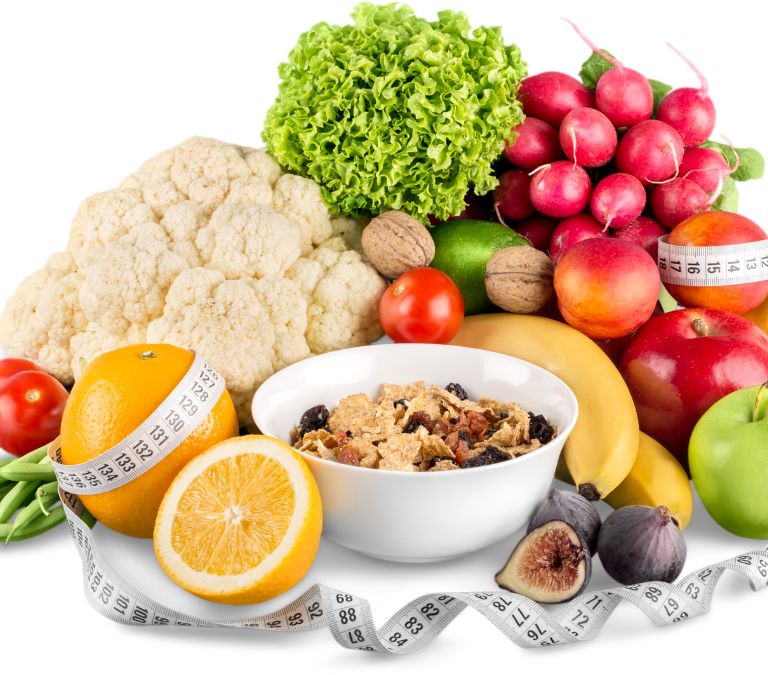
If you have been doing your research, you will know that a lot of the symptoms and complications of menopause are treated by making some lifestyle changes, especially to our diet. It is also the case for lower abdominal pain. Studies have shown that most of what we eat, including red meat, processed foods, and refined grains, can increase the likelihood of menopausal pain. Making slight changes to our diet goes a great way in reducing this pain.
I took the liberty of finding foods to help you fight the pain. These foods I am about to list are attempts at healthy eating. These foods have also shown much promise in helping reduce menopausal symptoms, so there is no harm in trying them out.
- Vegetables: broccoli, spinach, carrots, sweet potatoes, Brussels sprouts
- Whole grains: brown rice, whole-grain bread, oatmeal
- Legumes: beans, peas, lentils
- Fruits: apples, mangoes, berries, oranges
Some other changes you can make to your diets that will help reduce menopausal cramps include:
- Limit your consumption of processed wheat and sugars.
- Instead of red meat, opt for lean proteins like fish, skinless chicken, and plant proteins.
- Avoid fried, packed, processed, and conserved meals.
While most of these do not have substantial scientific backing, they show promise, and honestly, eating healthy never hurts anybody. It is a win-win situation.
Exercises that will Relieve You of Cramps during Menopause

You can make other lifestyle changes besides what you eat to help lower abdominal pain. I am talking about exercise. I am not saying you should overwork yourself by doing the most intense HIIT and cardio routines. No, these are simple exercises you can do in your free time. Some of them are so simple you can do them while doing other things. Some of them include:
Light Cardio
Aerobic activity that engages your vast muscle groups while maintaining a high heart rate can benefit you. There are a plethora of cardio alternatives available to you. I mean, any activity you can think of serves as a form of light cardio, but some of our favorites include:
- walking
- jogging
- biking
- swimming
While these might all look simple, it is still possible to strain yourself while doing them, so make sure you start slowly and ease into it. The recommended time frame when you are just beginning is 10-20 minutes.
Kegels
Kegel is good if the cause of the pain you are experiencing results from complications in the pelvic walls. Kegel exercises are workouts that strengthen the muscles in your pelvic floor. Pelvic floor exercises are another name for them.
The powers that support your uterus, bladder, small intestine, and rectum are all affected. When Kegels are correctly done, they go a long way in preventing pelvic prolapse. Remember how we mentioned earlier that this is one of the reasons why you get lower abdominal pains.
Yoga And Meditation
Relaxation has always helped with pains. It is the theory behind many alternative forms of medicine, so you should invest in routines that help you relax and stay calm. It is even more important when you realize that studies have shown that anxiety has been implicated in cases of lower abdominal pain after menopause.
Because no two women go through menopause similarly, your relief method is expected to be tailored to your specific symptoms. Whether it’s deep breathing, yoga, or meditation, choose a relaxation practice that works for you. Yoga positions that are supported and treatment may provide some assistance. These poses might help you relax and reduce the pain by focusing your mind.
Over-the-Counter Treatments
If all the home-based therapy doesn’t seem to work, maybe it is time to get an extensive clinical. An example would be to get some over-the-counter medication to help with the pain. The go-to over-the-counter medication for lower abdominal pain during menopause includes:
- non-steroidal anti-inflammatory drugs or NSAIDs
- non-narcotic analgesics or pain-relieving medications
- medicines with acetylsalicylic acids, such as Aspirin
- analgesic transdermal pads or gels with camphor, menthol, and the like.
A doctor may give a minimal dose birth control pill, patch, ring, or Intrauterine device to help women with severe cramps regulate their periods and make them less heavy.
In rare situations, women with severe menstrual or perimenopausal pain may be temporarily given prescription-grade pain medicines.
When Should You See A Doctor
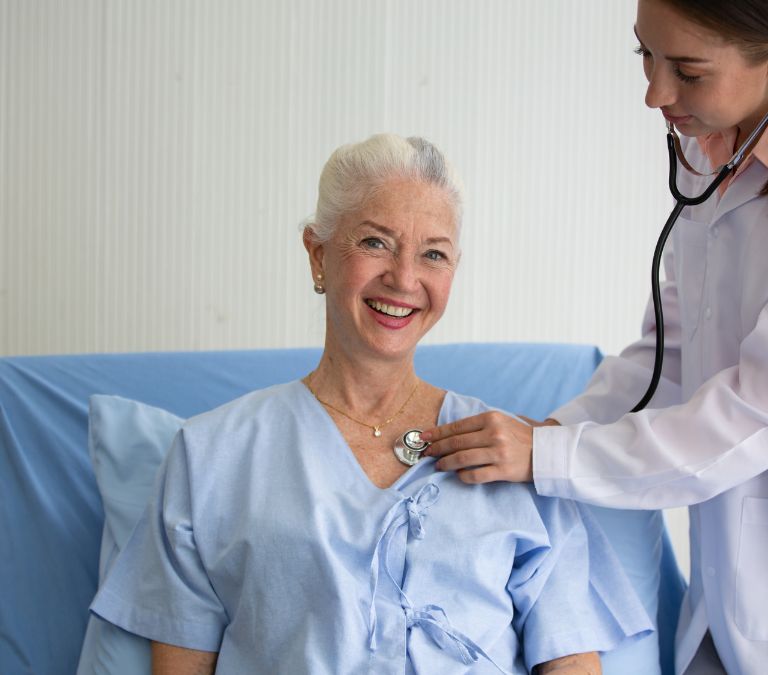
If abdominal or pelvic cramps are accompanied by other troubling symptoms, such as vaginal bleeding, a person should seek medical attention as soon as possible. Other signs of being aware include:
- Bloated tummy
- Chronic constipation
- Inability to urinate
- Diarrhea that lasts more than seven days
- Vaginal bleeding
- Sudden weight loss
- Unusual vaginal discharge
Anyone experiencing stomach or pelvic cramps with these other symptoms should seek medical attention. A doctor will inquire about a person’s symptoms and medical history and perform a physical examination. They may suggest that you see a specialist for additional testing. These tests are necessary so that the doctor can figure out if there is an underlying condition causing the pain that you are feeling. The other tests that are done include:
- Hysteroscopy: A hysteroscopy is used to examine the contents of the womb. It is usually done with a hysteroscope. A doctor will pass a thin tube with a camera, known as a hysteroscope, through the vagina, and into a person’s womb to collect a tissue sample for testing. It will usually take place under a local or general anesthetic.
- Transvaginal Ultrasound Scan: This is an internal scan of your reproductive system, usually done with a probe inserted into the vagina. It is typically invasive, and most people do not opt for it if there are other options.
- Sonohysterography: The method of sonohysterography is used to examine the inside of the womb. It’s a painless, safe test that creates visuals using sound waves and a computer. A doctor will inject a saline solution into a woman’s womb and check for issues with an ultrasound.
- Endometrial Biopsy: An endometrial biopsy involves removing a small piece of tissue from the uterine lining (endometrial lining) and examining it under a microscope for cancer and other cell abnormalities. A doctor will put a small tube into a woman’s womb to take a tissue sample, which will be examined for symptoms of abnormal or malignant cells.
- Dilation And Curettage: A doctor will access the woman’s cervix and take a sample of the uterine lining with a thin instrument. Doctors can examine the model to look for symptoms of abnormal growths such as polyps, endometrial hyperplasia, or cancer.
Treatment
After a proper diagnosis has been made and the doctor has figured out the reason for the pain you are experiencing, they will recommend some of the treatments I am about to mention.
- Progestin Therapy: Endometrial hyperplasia is frequently treated with progestin medication, usually prescribed by doctors. It is a significant cause of lower abdominal pains. If, after the tests, the doctors find out that this is the underlying reason for your abdominal pain, they would most likely prescribe this therapy. Oral tablets, injections, vaginal creams, and a doctor-fitted intrauterine device are all options for progestin.
- Dilation And Curettage Surgery: Endometrial hyperplasia is another reason for lower abdominal pain. Endometrial hyperplasia is treated with dilation and curettage surgery, removing thicker uterine lining sections.
- Hysterectomy: This procedure involves the removal of all or part of a woman’s womb. Hysterectomy is most commonly used to treat endometrial or cervical cancer, as well as big fibroids, while it is used to treat a premalignant form of endometrial hyperplasia.
Postmenopausal cramps may or may not be serious. If you’re having stomach pain or cramping for no apparent reason, you should make an appointment with a doctor to obtain a correct diagnosis and treatment. It is especially critical if the pains have no apparent cause or are accompanied by other significant issues.

